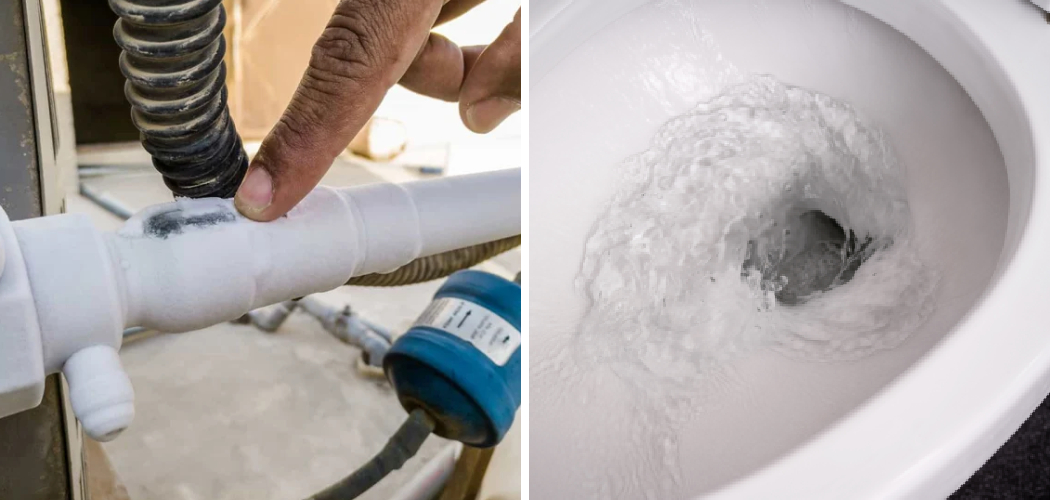Are you noticing some unexpected signs of a frozen pipe in your bathroom that you are unable to thaw? This winter season, dealing with a frozen toilet pipe can be more than just annoying and messy — it can be dangerous if not treated properly.
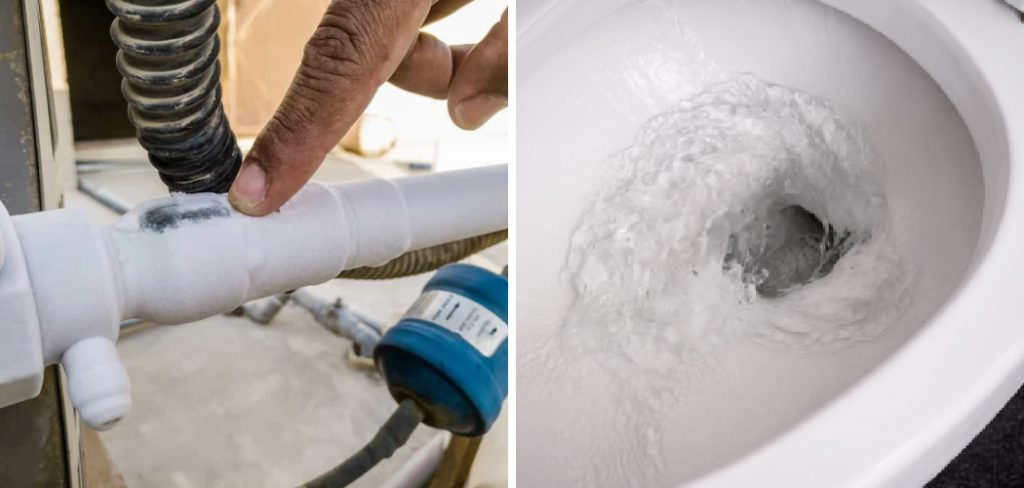
Knowing how to tell if toilet pipes are frozen will enable you to take steps to safely fix the issue before substantial damage occurs or costly repairs are necessary. In this post, we’ll provide clear instructions on what warning signs indicate that your toilet pipes may have become blocked by ice and need attention ASAP.
Materials You Will Need
Given below are the materials that you will need to identify a frozen toilet pipe.
Flashlight
You can use this to visually inspect the pipe.
Gloves
These will protect your hands while checking for a frozen pipe.
Sturdy Ladder
You may need to climb up a ladder in order to access the pipe.
Waterproof Tape
This tape can be used to seal off any connections or joints so that no water seeps out.
Heating Pad or Hair Dryer
You may need to use a heating pad or hair dryer in order to thaw the pipe.
Step-by-step Guidelines on How to Tell if Toilet Pipes Are Frozen
Step 1: Check the Water Pressure
Low pressure in the toilet could be an indication of a frozen pipe. Check your water pressure by flushing the toilet and observing the speed of the water. If it is slower than normal, this could mean that your pipes have become blocked by ice and need attention. If the pressure is low, proceed to the next step.
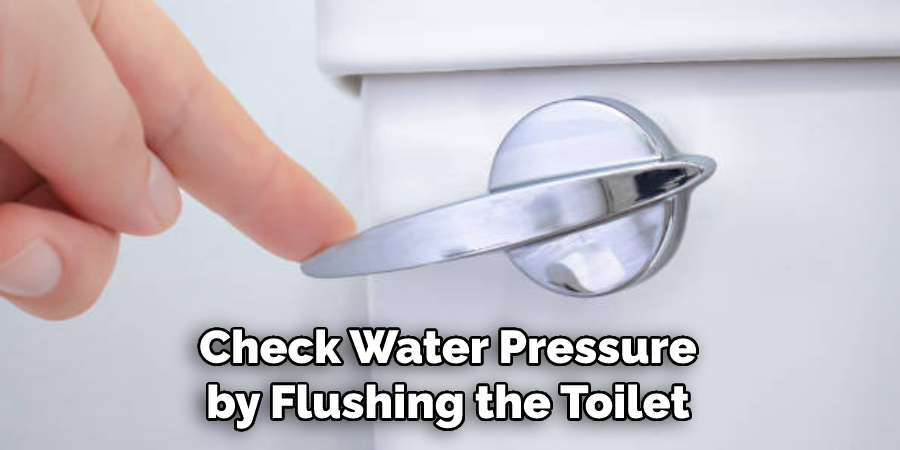
Step 2: Look for Frost or Ice Accumulation
Inspect the pipes around and below the toilet. If you see any frost accumulation or ice buildup, this is a strong indication that your toilet pipes are frozen. It’s important to take action as soon as possible at this point. But if there is no frosting or ice, proceed to the next step. Remember to wear gloves while conducting the inspection.
Step 3: Touch the Pipes
Use gloves to touch the outside of the pipe to see if it feels cold or icy. This can also give you an idea about whether or not there is a frozen blockage inside. If the pipe feels cold, then it’s likely that your pipes are frozen and need to be thawed. This is the perfect time to take action. But if the pipe feels warm, then you may want to proceed to the next step.
Step 4: Listen for Unusual Noises
If you hear any banging, knocking, or gurgling noises coming from the toilet pipes when you flush it, this could be another sign of a frozen pipe. If the water seems slow to drain down the pipes after flushing, make sure to check for freezing issues as well. That’s it — four simple steps to diagnose if your toilet pipes are frozen.
Step 5: Conduct a Visual Inspection
Using a flashlight and sturdy ladder, you should visually inspect the pipes to check for signs of frost, ice buildup, or any other unusual features. If there is a blockage present that is preventing water from flowing through the pipe, this can be seen easily with the help of a flashlight. That’s it — five simple steps to diagnose if your toilet pipes are frozen.
Step 6: Follow the Pipes
Trace the toilet’s pipes from inside your house up into your attic and then down into your basement. This will enable you to assess their condition more accurately and identify any areas where freezing may have occurred. It’s vital to look for any frosting, ice build-up, or other signs of freezing along the pipes. If you identify any of these symptoms, proceed to the next step.
Step 7: Check for Discoloration
If you notice any discoloration in the pipes – such as brownish-yellow stains or even rust – this could also indicate an issue with freezing. This discoloration is usually caused by moisture in the air that has condensed and then frozen inside the pipes. If you identify such signs, it’s time to take action. It’s also important to check for any wet areas, which could be a sign of a crack in the pipe.
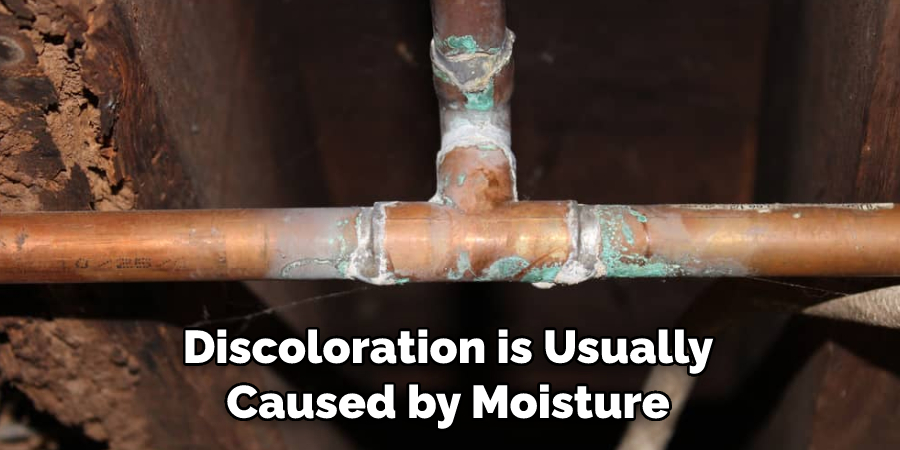
Step 8: Feel for Cold or Warmer Areas
Using your hands, often with gloves, feel the pipes for cold or warm areas. If you notice a section that feels colder or warmer than the other parts, this could be another indication of freezing. But if you suspect that your pipes are frozen, it’s time to take action now. There you have it — eight simple steps for diagnosing if your toilet pipes are frozen.
Step 9: Check for Leaks
As frozen toilet pipes can cause water to leak out, make sure to look around the base of the toilet and underneath it for signs of water seeping through. If there is any standing water present in these areas, this could mean that a pipe has become blocked by ice and needs attention immediately.
Step 10: Look at Your Water Meter
If you have a separate water meter installed in your home, check this for any changes in the water level. If you notice that it is gradually dropping, this could be an indication of a frozen pipe. It’s important to take action as soon as possible at this point. However, if the meter is not showing any signs of changes, you may want to proceed to the last step.
Step 11: Fix Any Connections or Joints
If you have identified any connections or joints that appear to be leaking water, use waterproof tape to seal them off immediately. This will help to prevent further damage and stop water from seeping out of the pipes while they are being thawed. But if everything appears to be in order, then you may have identified the cause of the problem.
Step 12: Thaw the Frozen Pipes
You can thaw frozen toilet pipes using a heating pad or hair dryer set at low temperatures. Make sure to move these slowly over the frozen area so as not to cause scorching or other damage. But if you don’t have access to these tools, a can of warm air can also be used.

Additionally, running hot water through the pipes can also help to thaw frozen pipes. Once the area has been warmed up, you can turn on the water and check that everything is working as normal.
Following these step-by-step guidelines on how to tell if toilet pipes are frozen should help you identify any potential issues quickly and easily. If you do encounter a frozen pipe, make sure to contact a professional as soon as possible for assistance with thawing them out safely and efficiently. Taking these precautions now can save you from dealing with unnecessary repairs
Do You Need to Call a Professional?
If your pipes are frozen and you’re unable to thaw them out yourself, it’s important to contact a licensed plumbing contractor right away. A professional will be able to assess the situation more accurately and offer advice on the best course of action. They can also provide assistance with thawing frozen toilet pipes so that they can resume normal operation again.
By having a qualified expert inspect your plumbing system, you’ll be able to avoid any costly repairs or further damage in the future. Don’t wait for something bad to happen before calling for help – get an experienced plumber on board as soon as possible! Your peace of mind is worth it!
Frequently Asked Questions
Q: What Causes Frozen Toilet Pipes?
A: Frozen toilet pipes can be caused by a variety of factors, such as improper insulation, cold weather, and blocked or slow-moving pipes. It’s important to identify the cause of the freeze so that it can be addressed accordingly.
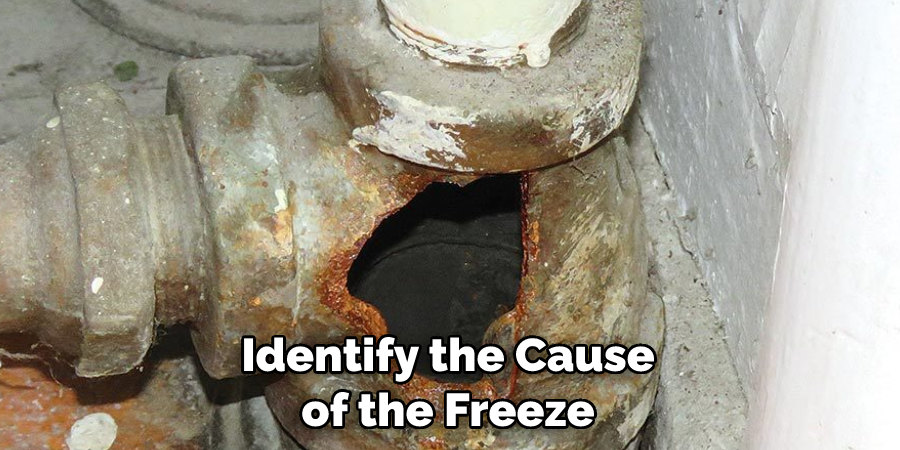
Q: What Are The Signs Of Frozen Toilet Pipes?
A: Some common signs of frozen toilet pipes include discoloration in the pipes, cold areas on the pipe surface, leaking connections or joints, and a water meter that is gradually dropping.
Q: What Should I Do If I Suspect Frozen Toilet Pipes?
A: If you suspect frozen toilet pipes, it’s important to contact a professional plumbing contractor right away. A licensed expert can inspect your system and offer advice on the best course of action for resolving the issue.
Additionally, they can provide assistance with thawing the pipes safely and efficiently. Don’t wait for something bad to happen – contact a professional as soon as possible! Your peace of mind is worth it!
Q: What Else Should I Be Aware Of?
A: While frozen toilet pipes are often an issue during cold weather, it’s important to ensure that your pipes are properly insulated on a regular basis. This will help to prevent freezing and minimize the risk of costly repairs or further damage in the future.
Additionally, make sure to check for any leaking connections or joints and call a professional if you find any. Taking these precautions now can save you from dealing with unnecessary repairs down the line.
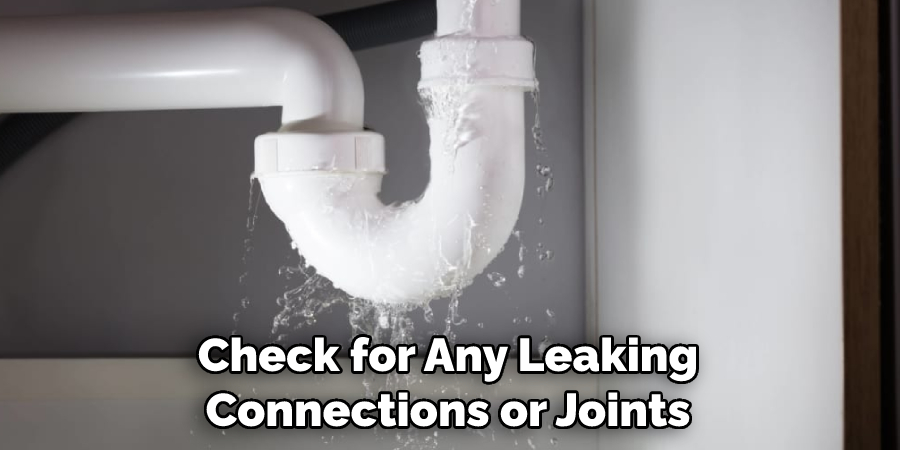
Conclusion
Thanks for reading this article on how to tell if toilet pipes are frozen. In conclusion, frozen pipes can be a huge challenge for any homeowner in cold weather climates. Taking measures to prevent this from happening is key and should not be taken lightly. However, there are warning signs that can help you detect if your pipes are freezing.
In addition to feeling colder water or hearing strange gurgling noises, you may also notice a sudden drop in the water pressure of your pipes or light fixtures that still have power but don’t turn on. If these symptoms occur, it is important to act quickly to prevent further damage and thaw out the pipes as soon as possible.
With the right precautions and attention, frozen pipes shouldn’t cause too many problems. Awareness of the potential danger is key to knowing when it’s time to act — so don’t wait until it’s too late!
Remember: freezing temperatures can wreak havoc on one’s plumbing system and being aware of the warning signs is essential in protecting your valuable investments and keeping your peace of mind intact.

